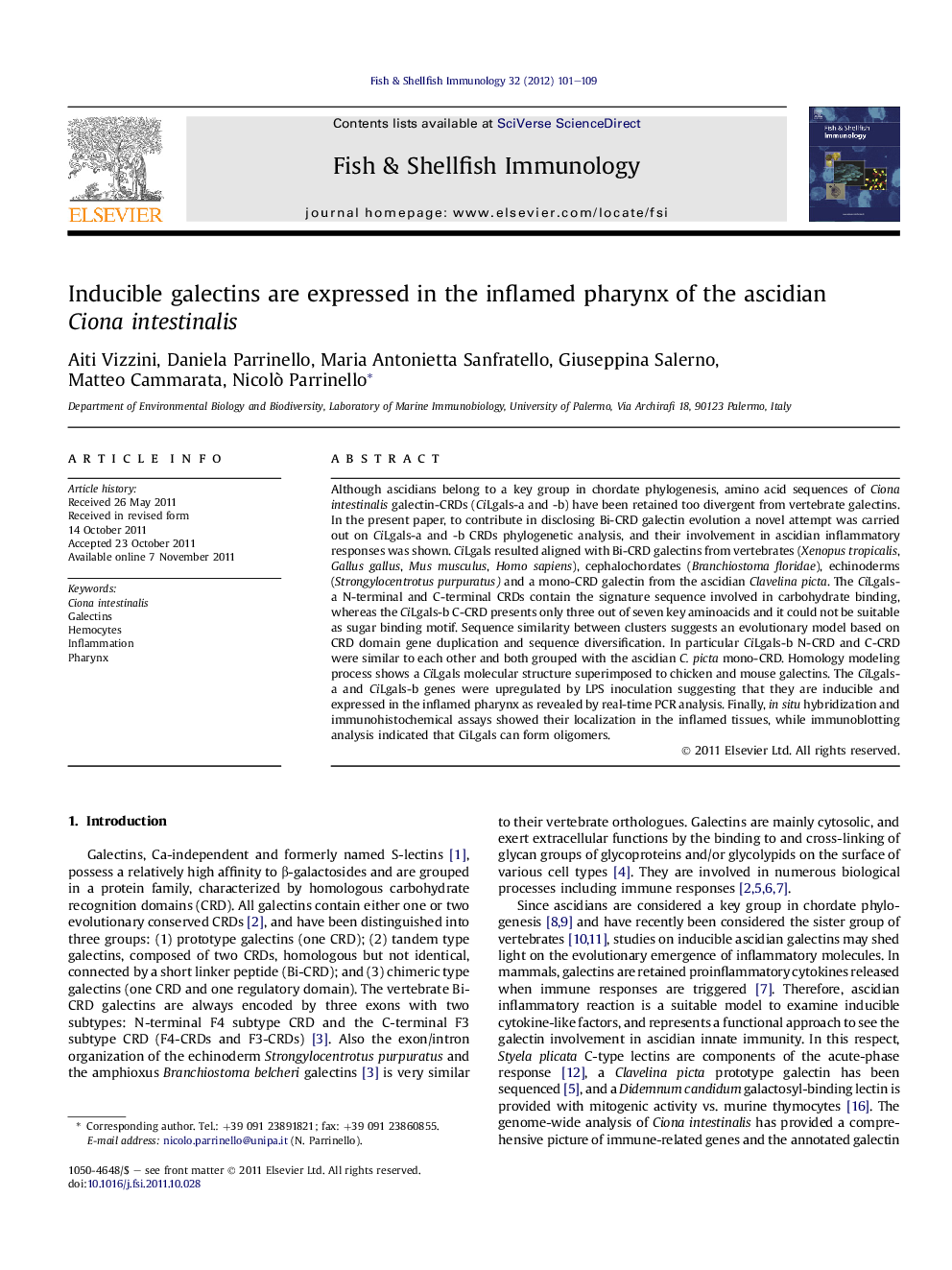| Article ID | Journal | Published Year | Pages | File Type |
|---|---|---|---|---|
| 2432395 | Fish & Shellfish Immunology | 2012 | 9 Pages |
Although ascidians belong to a key group in chordate phylogenesis, amino acid sequences of Ciona intestinalis galectin-CRDs (CiLgals-a and -b) have been retained too divergent from vertebrate galectins. In the present paper, to contribute in disclosing Bi-CRD galectin evolution a novel attempt was carried out on CiLgals-a and -b CRDs phylogenetic analysis, and their involvement in ascidian inflammatory responses was shown. CiLgals resulted aligned with Bi-CRD galectins from vertebrates (Xenopus tropicalis, Gallus gallus, Mus musculus, Homo sapiens), cephalochordates (Branchiostoma floridae), echinoderms (Strongylocentrotus purpuratus) and a mono-CRD galectin from the ascidian Clavelina picta. The CiLgals-a N-terminal and C-terminal CRDs contain the signature sequence involved in carbohydrate binding, whereas the CiLgals-b C-CRD presents only three out of seven key aminoacids and it could not be suitable as sugar binding motif. Sequence similarity between clusters suggests an evolutionary model based on CRD domain gene duplication and sequence diversification. In particular CiLgals-b N-CRD and C-CRD were similar to each other and both grouped with the ascidian C. picta mono-CRD. Homology modeling process shows a CiLgals molecular structure superimposed to chicken and mouse galectins. The CiLgals-a and CiLgals-b genes were upregulated by LPS inoculation suggesting that they are inducible and expressed in the inflamed pharynx as revealed by real-time PCR analysis. Finally, in situ hybridization and immunohistochemical assays showed their localization in the inflamed tissues, while immunoblotting analysis indicated that CiLgals can form oligomers.
► Two ascidian galectins (CiLgals-a,b) were aligned with vertebrate Bi-CRD galectins. ► A homology modeling process shows CRDs molecular structure. ► CiLgals-a and -b present differences in their signature sequences. ► Both galectins are inducible by LPS inoculation. ► They are expressed by hemocytes circulating within inflamed pharynx vessels.
